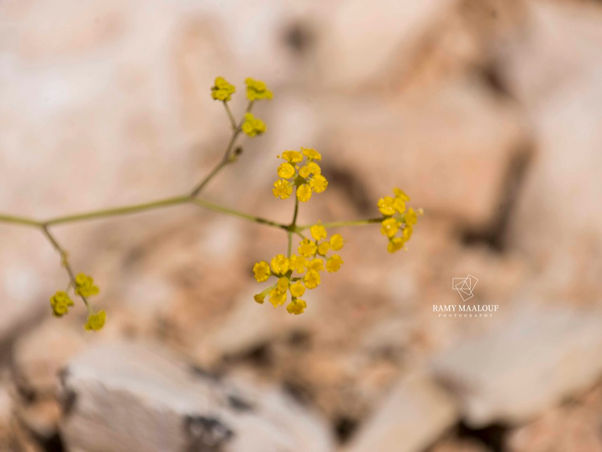Family |
Apiaceae
Bupleurum exaltatum
M.Bieb.
Bupleurum exaltatum M. Bieb.
(Nouvelle Flore du Liban et de la Syrie, vol. 2, Pl. CCXCVI nº 1; 1983)
Life-form & habit: Tall, erect perennial, often branched from the base, with rigid stems up to 1 m tall.
Leaves: Glaucous, coriaceous, narrowly lanceolate or linear-lanceolate, acuminate, 5–15 cm long, slightly undulate, perfoliate or sessile.
Inflorescence & flowers: Terminal umbels with 5–10 rays; rays robust, sometimes subequal. Involucre absent. Bracteoles of the involucel 5, persistent, lanceolate-acuminate, 3-nerved, as long or longer than the fruit.
Fruit: Oblong to oblong-elliptic, thickened and prominently ribbed, with thickened commissure.
Phenology: Flowers from May to July.
Habitat & elevation: Open, grassy or rocky slopes, often on limestone at mid to high elevation.
Lebanese distribution: Mm. Hadeth el-Jebbé, ‘Aïn Zehalta, Barouk, Afqa, Col de Zahlé, Dahr-el-Baïdar, Qammou‘a; Me. Jabal Sannine.
Syrian distribution: A.L. Ouadi el-Qarn, Bloudane, Jabal Halimé, Qala‘at Jendel.
Native range: Afghanistan, Albania, Bulgaria, France, Greece, Iran, Iraq, Italy, Kazakhstan, Kirgizstan, Lebanon-Syria, North Caucasus, NW. Balkan Pen., Pakistan, Romania, Sinai, South European Russia, Spain, Tadzhikistan, Transcaucasus, Turkmenistan, Türkey, Uzbekistan, West Himalaya, Xinjiang. (KEW)





